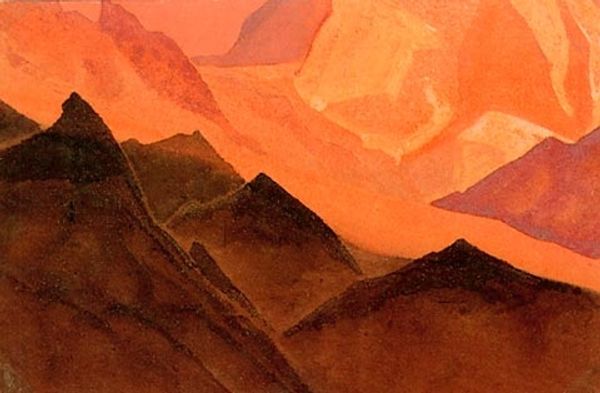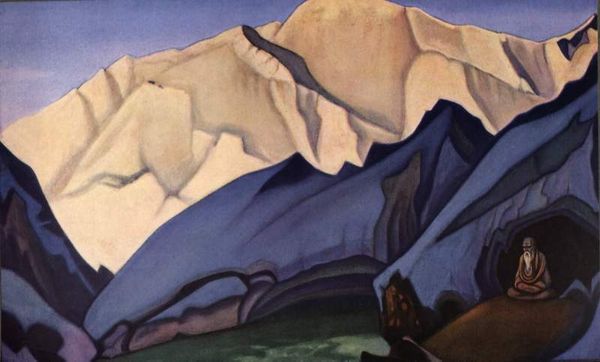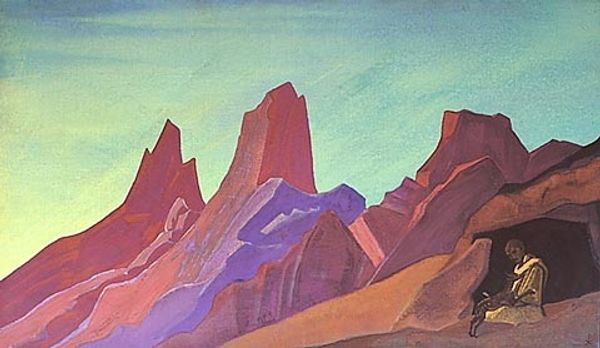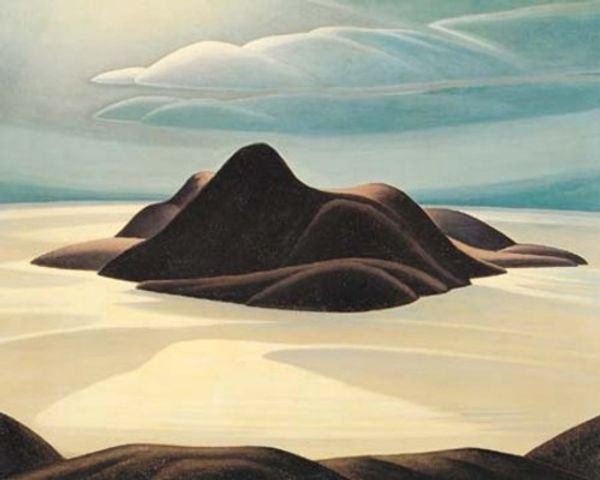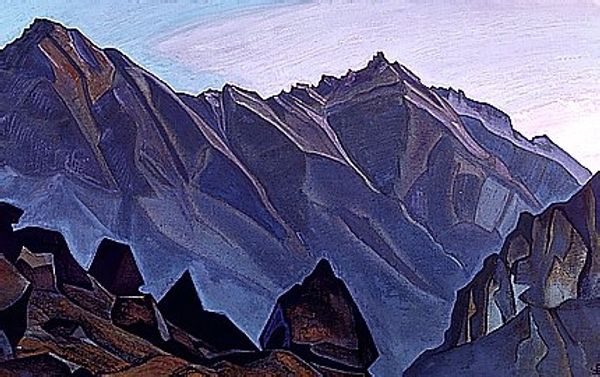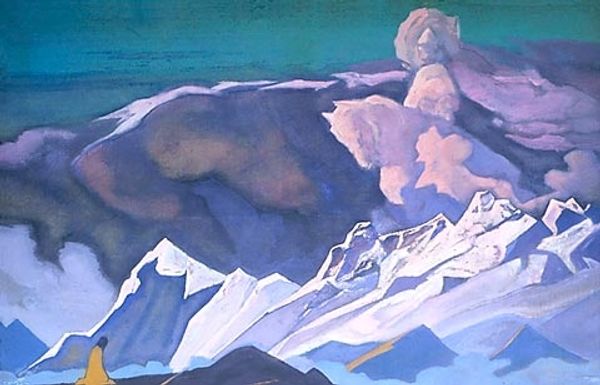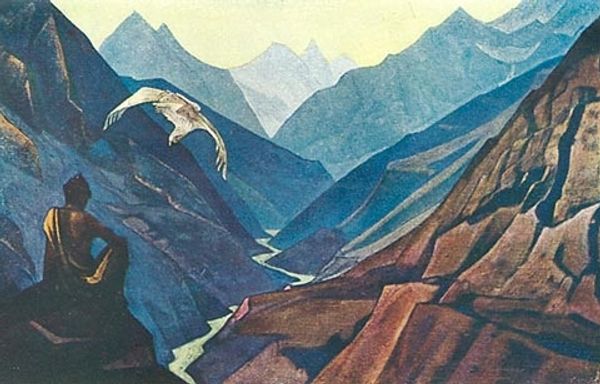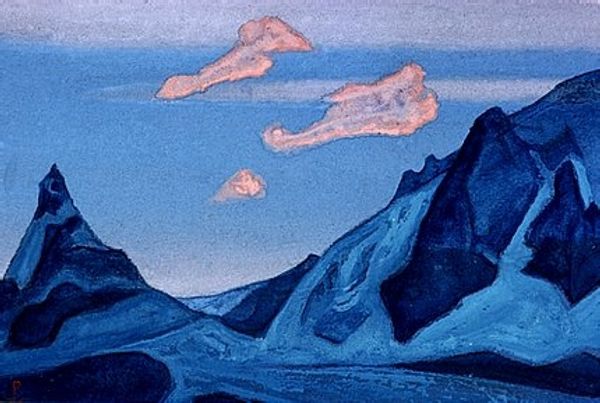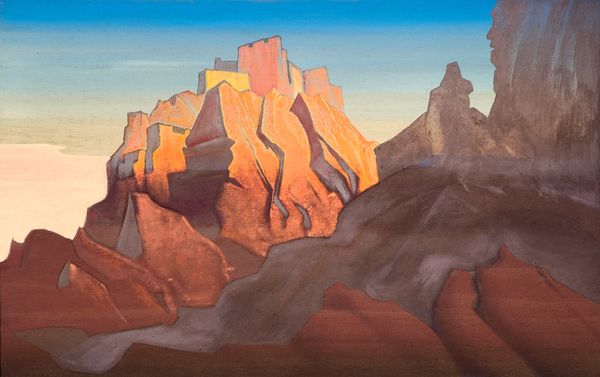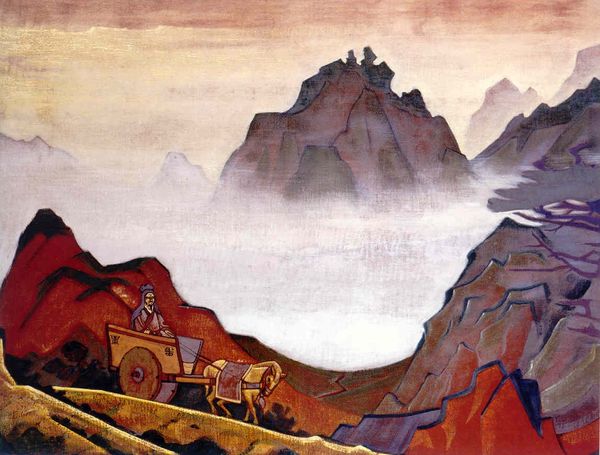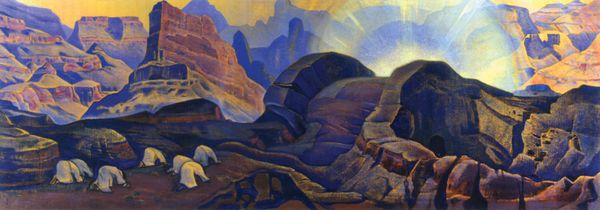
Copyright: Public domain
Curator: Here we have Nicholas Roerich's "Vision," painted in 1923. It’s an oil painting, and its subdued palette initially strikes me as peaceful. What are your first thoughts? Editor: It feels mystical and a little unsettling. The colors are muted, almost dreamlike, and those towering mountains seem to be pressing down. I get the sense of a journey, but to where? Curator: Roerich was heavily invested in the spiritual and theosophical movements. You see that tiny figure in the lower right corner? That placement emphasizes humanity's smallness in the face of nature and larger cosmic forces. He believed in the interconnectedness of all things and sought to convey spiritual experiences through his art. Editor: Yes, and that figure almost seems dwarfed by the landscape, hinting at the individual's struggle against insurmountable odds. I wonder, is it about personal revelation, or is there a commentary on social structures, perhaps the insignificance of the individual within a larger political machine? Curator: It's tempting to see commentary in everything. Given Roerich’s cultural milieu, steeped in symbolism, and his interests, it's probably best viewed through the lens of personal spiritual journey rather than a direct critique of, say, post-revolutionary Russia. While Roerich did engage with revolutionary ideologies initially, he swiftly diverted his energy towards art and preservation. Editor: Maybe. I do agree on a spiritual reading, especially seeing that almost glowing mountaintop that looks like a symbolic lotus flower. It really speaks to Roerich's Theosophist leanings and the exploration of inner landscapes. Curator: Precisely! It highlights how Roerich saw art’s role. Not as mere representation, but as a vehicle for cultural bridge-building and spiritual awakening during great social and political change. He was advocating for cultural preservation during great turmoil. Editor: Still, looking at it now, it feels oddly relevant in today's sociopolitical environment. We’re constantly being bombarded with oppressive media and societal forces; it’s hard not to apply some sort of cultural or sociopolitical reading. Curator: Perhaps that says more about our contemporary anxieties than Roerich's original intent. But art, after all, constantly invites reinterpretation through the lenses of the present. It's this continued capacity that makes a work like "Vision" endlessly engaging. Editor: Exactly! Its lasting resonance stems, perhaps, from this tension between the individual, their spiritual quest, and those imposing societal constructs around them.
Comments
No comments
Be the first to comment and join the conversation on the ultimate creative platform.
